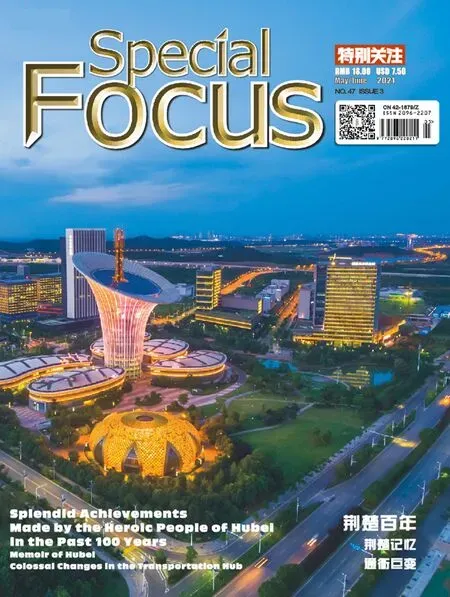Hé
By Wang Xiaoke & Shi Rui
If I had to pick one,among the sea of Chinese characters,to represent Chinese culture,the character 和 (hé,meaning“harmony,” “peace,” “together with,” etc.) would be the most acceptable one.
At the opening ceremony of the 2008 Beijing Olympics,several ancient forms of the character 和 appeared in the “artistic writing” part of the performance.They were presented by many performers on the stage,echoing the Confucius idea of “harmonious humanism.” Later,the character won the highest number of online votes in the“100 most culturally significant Chinese characters” contest organized byChinese Heritagemagazine in October of 2010.Chinese netizens regard this character as the best icon of traditional philosophical thoughts and ethical concepts of China,conveying the national temperament and spirit of Chinese people.
In the early stages of Chinese history,people used和 (hé,harmony) to interpret their understanding of the fundamental relationships in the world:namely,human relations,and between humans and nature.For the former,You Zi said in theAnalects of Confucius,“In practicing the rules of propriety,it is the harmony that is prized (礼之用,和为贵lǐ zhī yòng,hé wéi guì),” putting harmony in the center of an ideal society of Confucian propriety.For the latter,Mencius put forward that “Opportunities vouchsafed by heaven are less important than terrestrial advantages,which in turn are less important than the harmony among people (天时不如地利,地利不如人和 tiānshí bùrú dìlì,dìlì bùrú rénhé),” indicating the importance of the harmony which unites heaven,earth,and people.
In the modern Chinese language,和 (hé) also has other meanings.It can be used as a conjunction to connect words or phrases,like “and”or “together with” in English.This usage makes 和 one of the most commonly used Chinese characters today.
The character can also be used as a verb to indicate some specific acts.When it is read as hè and used in the phrases like 应和 (yìnghè) and 附和(fùhè),it conveys the meaning of “agreeing with (the words)”or “following (the deeds)” of others.
When read as huò,such as in 和药 (huòyào),it means mixing (things like medicines,etc.).
When the character is pronounced as huó,such as being used in the phrase 和面(huómiàn,kneading dough),it indicates the act of adding water to powders such as flour to make it sticky.
In addition,when Chinese people say “和了 (húle)” while playing mahjong (a traditional game played by 4 people with 144 tiles),they are declaring their victory in the game.
No matter in its modern form or its ancient forms as early as Xiaozhuan (小篆,widely used in Qin Dynasty,more than two thousand years ago),和(written in Xiaozhuan as)is composed of two frequently used characters,禾 (,crops)and 口 (,mouth).This character-formation indicates the simple fact that the status of harmony must be achieved through providing the people with enough food.
This task may not be as easy as it looks.According to the 2020 Global Hunger Index,3 countries have alarming levels of hunger,and 31 countries have serious levels of hunger,including the densely populated India.For the sake of humankind,it is urgent to fight hunger and make the world a more harmonious place; this is the unfinished task of our top agronomists like Yuan Longping,who had the dream that “hybrid rice will be grown all over the world to help solve the global scarcity of food.”Yuan’s death on May 22,2021 was an incalculable loss to the entire human race,but on the call of this aged pioneer,and many like him,we have been working “together with” each other for the ultimate goal of“harmony” and “peace.”
- Special Focus的其它文章
- Sound Sleep
- Quotes

